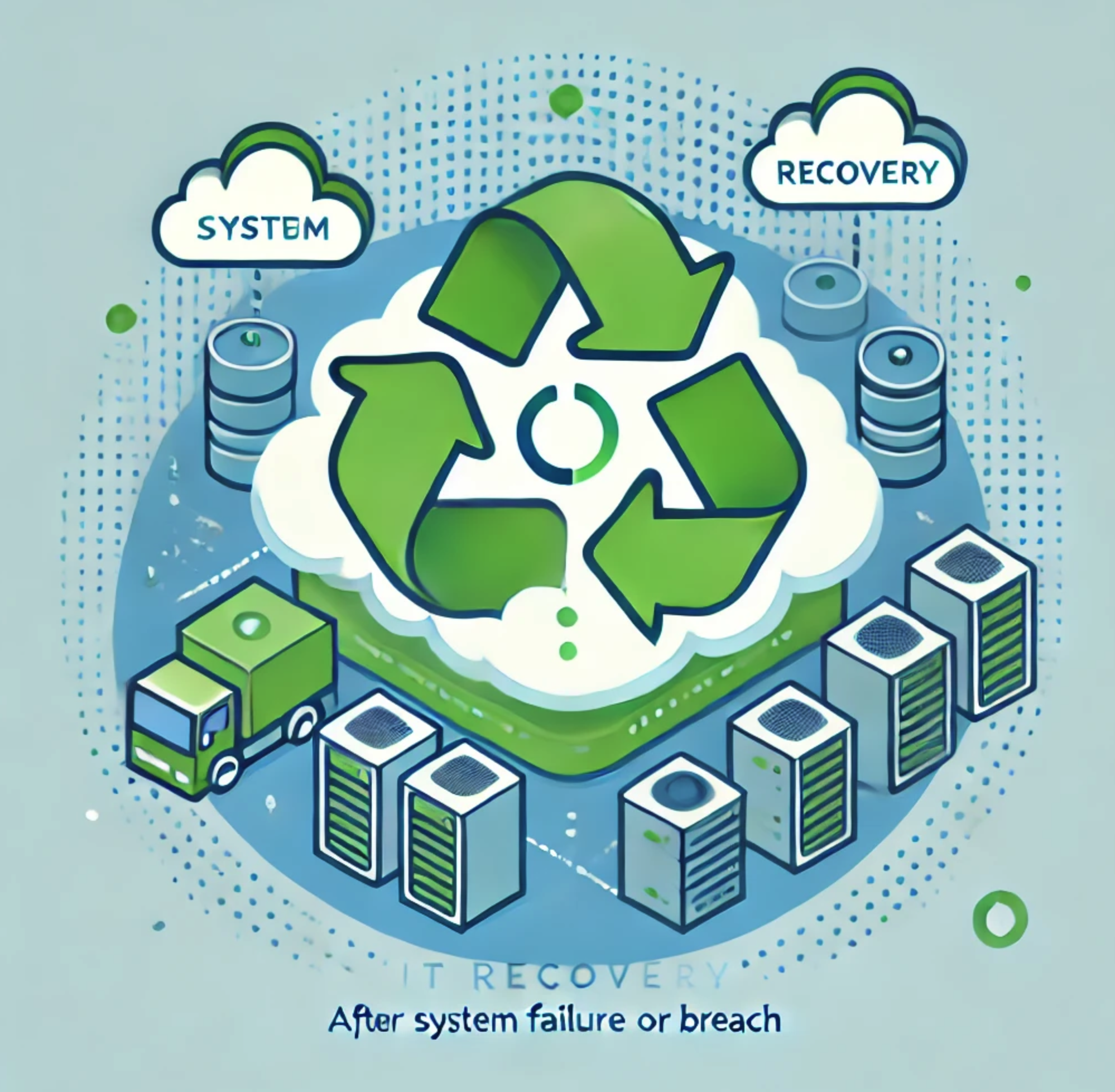Title: Optimizing Cloud Security and Infrastructure: An AWS Assessment
Published September 29, 2024
By Mya Schaefer, (Senior Consultant, Berkshire Solutions LLC)
-
Executive Summary:
A concise overview of the key findings and recommendations from the AWS infrastructure assessment, focusing on the security review, VPC architecture, and action items for improvement. -
Introduction:
- The importance of regular cloud infrastructure audits.
- Overview of the audit process using AWS and SmartDraw as tools.
- The role of cloud security in maintaining business continuity.
-
Assessment Scope:
- What was assessed in the AWS infrastructure.
- Key areas of focus: Security groups, VPC/subnets, IAM roles, and critical services.
-
Key Findings:
- Security Group Misconfigurations: Summary of potential risks and recommendations.
- IAM Permissions and Access: Review of admin accounts, least privilege principle, and suggestions for improvement.
- VPC Architecture: Observations on the existing architecture and ways to optimize it.
-
Recommendations:
- Step-by-step actions to address identified risks and improve overall security posture.
- Tools and processes for continuous monitoring and auditing.
-
Conclusion:
The importance of proactive audits and improvements to ensure cloud infrastructure security and resilience.
Introduction:
As businesses continue to shift critical workloads to cloud infrastructure, maintaining a secure, well-architected environment becomes paramount. Cloud environments are dynamic, and configurations can change frequently, introducing potential vulnerabilities if not properly managed. This white paper presents an assessment of an AWS cloud infrastructure using SmartDraw to visualize and analyze key components, with a focus on security and operational resilience. We explore how regular audits can help mitigate risks, improve system performance, and ensure that the cloud environment remains aligned with best practices.
The assessment was conducted with a focus on several core elements of AWS infrastructure, including security groups, VPC architecture, and identity and access management (IAM). Based on the findings, we provide actionable recommendations to help businesses strengthen their cloud security and optimize their operational efficiency.
Executive Summary:
This white paper presents a comprehensive assessment of an AWS cloud infrastructure, using SmartDraw to visualize key components. The primary objective was to evaluate the security and configuration of the environment, ensuring that it meets best practices and mitigates potential risks. Key findings include misconfigurations in security groups, overly broad IAM permissions, and opportunities to optimize VPC architecture for better security and performance.
Our recommendations focus on tightening security group rules, enforcing the least privilege principle for IAM users, and implementing a robust monitoring system to track changes in real-time. Additionally, we stress the importance of regular backup reviews and disaster recovery testing to maintain operational continuity in the event of a failure. By following these recommendations, organizations can significantly reduce their exposure to security risks while ensuring their AWS environment is resilient and scalable.
That sounds like a comprehensive and insightful deep dive! Let’s structure those topics in the white paper to ensure everything is covered clearly and thoroughly. Here’s how we can weave those sections into the white paper, focusing on both the technical aspects and practical recommendations.
Key Offerings
1. Cloud Infrastructure Audit & Diagram:
Purpose of the Audit:
The first step in any comprehensive cloud infrastructure review is conducting a full audit, mapping out the existing architecture, and identifying all key services, resources, and interdependencies. In this assessment, AWS SmartDraw was used to visualize the cloud infrastructure, providing a clear view of virtual private clouds (VPCs), subnets, security groups, and key AWS services like EC2 instances and CloudFront distributions.
Key Insights from the Diagram: - VPC Layout: Visualization of subnets across different availability zones. This redundancy enhances high availability but requires clear security configurations to prevent unnecessary exposure. - Security Groups & Access: The diagram highlights existing security groups, offering a way to visually identify potential gaps or misconfigurations in access control.
Recommendations:
- Regular updates to the cloud infrastructure diagram to reflect any architectural changes. - Use the diagram as a foundational tool to perform routine checks on the infrastructure, ensuring that no resources are unnecessarily exposed to the public internet.

2. Performance & Resilience Assessment:
Cloud Performance:
Cloud performance is a critical metric for businesses, ensuring that workloads run smoothly without interruptions or degradation. During the audit, a review of the VPC setup and network configurations highlighted opportunities to optimize data flow between instances and availability zones. In particular, the use of elastic load balancers (ELBs) and autoscaling can help manage spikes in demand without compromising performance.
Resilience Considerations:
Resilience goes hand in hand with performance, ensuring that systems remain operational even in the event of failure. The current VPC setup across multiple availability zones provides a level of redundancy, but additional resilience can be achieved through: - Geographic distribution: Deploy workloads across multiple regions for disaster recovery. - Health checks and failover configurations: Ensure health checks are in place for all services, and that failover mechanisms (like Route 53) are tested regularly.
Recommendations: - Implement autoscaling where applicable to handle variable workloads. - Test and confirm failover configurations across availability zones and regions. - Regular load testing to assess the infrastructure’s ability to handle peak traffic.
3. Security Assessment & Identifying Cloud Infrastructure Threats:
Security Overview:
A security assessment of the AWS infrastructure was performed, with a focus on identifying potential vulnerabilities in security group configurations, publicly accessible resources, and user permissions. The SmartDraw diagram helped highlight areas where certain services, such as EC2 instances or public-facing endpoints (like CloudFront), may expose sensitive resources to the broader internet.
Potential Threats: - Overly Permissive Security Groups: Some security groups allow broad access to common ports (e.g., SSH, HTTP), increasing the attack surface. - Public-Facing Resources: Public internet gateways and load balancers can expose the system to unwanted traffic if not properly secured. - IAM Role Misconfigurations: Certain admin-level users were granted more privileges than necessary, violating the least-privilege principle and increasing the risk of unauthorized access.
Recommendations: - Tighten Security Groups: Limit access to sensitive ports (SSH, RDP) by restricting IP ranges to trusted networks or using VPNs. - Apply the Principle of Least Privilege: Regularly audit IAM permissions and enforce stricter role-based access control (RBAC). - Enable Logging and Monitoring: Ensure that CloudTrail and VPC Flow Logs are enabled to detect any unusual activity.

4. Ensuring Backups are Functional and Disaster Recovery Plan is Actionable:
Backup Strategy:
A robust backup plan is essential for ensuring business continuity in the event of a system failure or data breach. In this audit, it was found that while backups were being performed, regular validation and testing of these backups were not scheduled, potentially exposing the organization to risks in the event of a failure.
Disaster Recovery Plan (DRP):
A disaster recovery plan is not just about having backups but ensuring that systems can be restored quickly and effectively. This includes creating recovery time objectives (RTOs) and recovery point objectives (RPOs) that align with business needs. Additionally, cross-region replication and failover testing are critical components of a well-functioning DRP.
Incident Response Plan:
In the event of a breach or system failure, a well-defined Incident Response Plan (IRP) ensures that the organization can swiftly mitigate damage and restore services. This includes identifying the breach, containing it, mitigating risks, and reviewing logs to understand the root cause. Regular IRP drills should be conducted to ensure that all team members are familiar with their roles in the event of an incident.
Recommendations: - Test backups regularly to ensure they are restorable. - Implement a cross-region replication strategy to ensure that data can be recovered from another AWS region in case of failure. - Create and document a formal Disaster Recovery Plan (DRP), including regular failover tests. - Establish a clear Incident Response Plan (IRP) and conduct regular team drills to prepare for potential security incidents.
Conclusion:
By conducting a thorough audit of your AWS infrastructure and following the recommendations laid out in this report, your organization can enhance its security posture, improve resilience, and ensure operational continuity in the event of a disaster. These proactive measures, combined with regular reviews and updates, will help mitigate risks and safeguard your cloud environment in an ever-evolving threat landscape.
